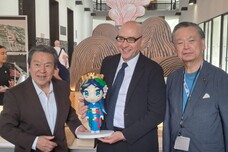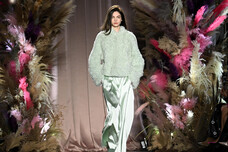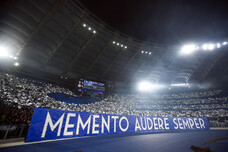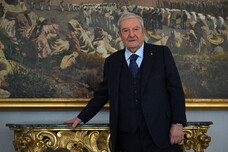A vast array of the different styles the American artist Keith Haring experimented with will be on display at Milan's Palazzo Reale from February 21 until l June 8. The 110 works in 'Keith Haring, About Art' show the artist's inspiration, from counterculture and political statements to allusions to contemporary and classical art, from Italian Renaissance and archeology to ethnography and pre-Colombian languages. Some have never been exhibited before and many are monumental in size. Haring was best known for his graffiti-inspired drawings, which he first made in subway stations and later exhibited in museums.
The exhibition is promoted by the culture section of the Milan town council, Giunti Arte Mostre Musei and the 24 Ore Cultura-Gruppo 24 Ore. It also enjoys collaboration from Madeinart and the Keith Haring Foundation. The joint effort under curator Gianni Mercurio brings s fresh look to the leader of the Street Art genre with its bright colors and graffiti style.
The works are from both public and private collections in Europe, America and Asia and were selected for their ability to use childlike iconography to convey messages on important topics of the time and to shed light on their relationship with the history of art. Inside the exhibition itself, Haring's works are set in juxtaposition with their sources of inspiration, from classical archaeology to pre-Colombian arts, from archetypical figures from different religions and Pacific masks to Native American creations and 20th century protagonists in Europe and the US. The exhibition is based on the critical assumption that any retrospective of Haring's art must necessarily be seen in the light of art history. He had understood this and put it at the center of his work itself.
The masterpieces by the American artist will at Palazzo Reale be flanked by ones made by artists from different periods, which Haring looked to and reinterpreted in his own unique and unmistakable style, in a narrative synthesis of archetypes from the classical tradition, tribal and ethnographical art, of Gothic images or cartoons, of styles from his own epoch or from predictions of the future through the use of computers in some of his experiments. In this 'dialogue' between the 'genius of Street Art' and the cutting-edge movements of the twentieth century are references to Jackson Pollock, Jean Dubuffet and Paul Klee as well as models of Trajan's Column, masks from the Pacific region and paintings from the Italian Renaissance. Haring was one of the most important artists of the second half of the twentieth century and his art is usually seen as an expression of a socially and politically active counterculture focusing on the issues of his and our time: drugs, racism, AIDS, the nuclear threat, youth alienation, discrimination of minorities and the arrogance of power. Haring took part like few others in the collective consciousness, becoming a world icon as artist and activist.
However, his work - as shown in this exhibition - was broader and aimed to bring together artistic styles into his own unique, personal one with a symbolism that was at the same time universal and put humans at its center.
ALL RIGHTS RESERVED © Copyright ANSA











